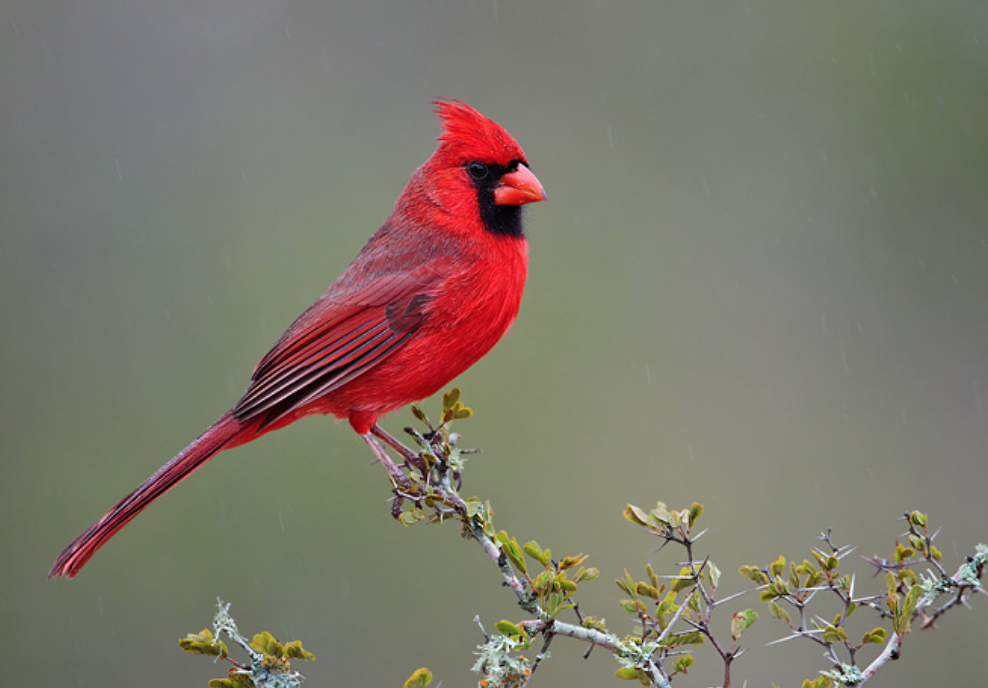Contributed by Bill Hamilton
The Northern Cardinal is one of the most recognizable birds in North America. The bright red body feathers and distinctive black mask of the male and the more subdued but equally elegant olive brown and red-tinted feathers of the females stand out clearly in their wide range of preferred habitats. They are very abundant in the edges of woods and thickets, in open fields, in suburban yards and gardens, and in a wide variety of urban green spaces.
The Northern Cardinal is found throughout the eastern United States and on south into Mexico and Central America. Historically, cardinals were most numerous in the southern portions of their geographic range, but they have been steadily increasing in numbers in the north and are even expanding their distribution northward into northern New England and southern Canada. The western boundary of their range is roughly along a line from the Dakotas to western Texas, although there are cardinal populations in New Mexico, southern Arizona, and California. I remember my Uncle Harold telling me that he really liked “those red birds” visiting his farm in northwestern Iowa. I remember seeing small clusters of them out there mixed into large flocks of Cedar Waxwings.
The expanding distribution of the Northern Cardinal has been described as another ecological consequence of global warming. Some researchers, though, feel that the increasingly popular hobby of providing birds with seed in feeders may have allowed this species to thrive in regions previously too marginal or too harsh for their survival. Further, the ongoing fragmentation of natural forest habitats by human activity and the proliferation of suburban shrub and conifer plantings have created increasingly abundant “edge” ecosystems which are greatly favored by this species.
The Northern Cardinal eats a wide variety of seeds, fruits and even the buds of some trees. They also eat insects and, in fact, rely almost exclusively on insects as food for their rapidly growing young.
Cardinals are very common visitors to backyard bird feeders and especially consume large quantities of sunflower seeds. In fact, if you put a birdfeeder with a bird seed mix that does not include sunflower seeds, you are very likely to not attract very many cardinals! The Northern Cardinal is not migratory and will remain even in the most northern parts of its geographic range throughout the winter especially if it is sustained by human-maintained birdfeeders.
Our front yard bird feeders are visited by a large number of cardinals throughout the year. Mated pairs frequently have three clutches of eggs and can be seen throughout the summer frantically feeding their fledglings on every surrounding branch and fence post. The nurturing compulsion of this species is legendary. Someone once even observed a compulsive parental cardinal trying to feed a surface gaping goldfish in an outdoor fish pond!
The arbor vitae on the west side of our property, and the spruces and hemlocks on the north and west boundaries are full of cardinal nests throughout the summer and are packed with night roosting individuals throughout the winter. In the winter we often have 20 or 30 cardinals at a time swarming the front yard seed hoppers and the piles of spilled seed on the ground below them. The red males light up the gray days and stand out beautifully against the brown leaves and the scattered, white snow.
Image: Tringa Photography
